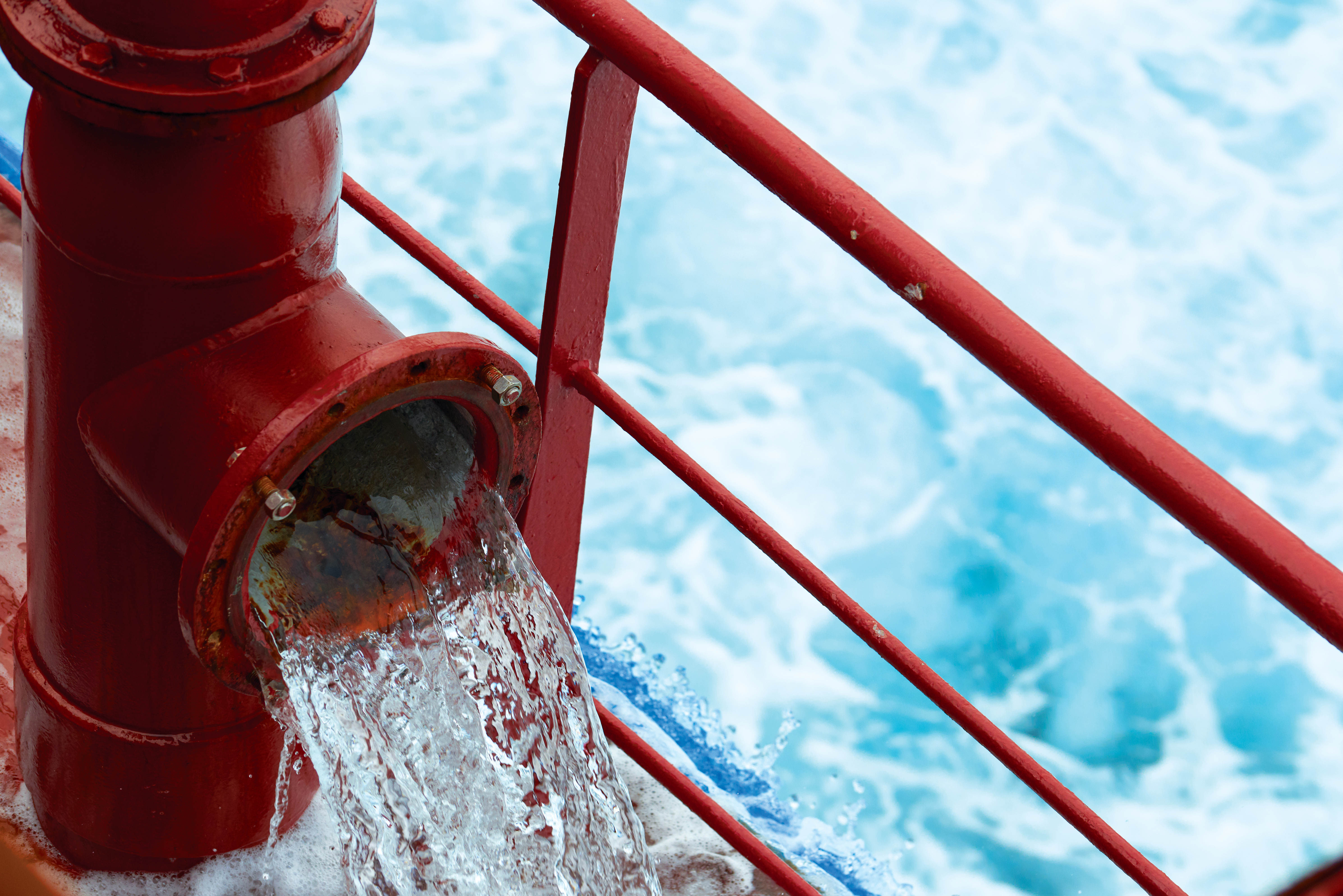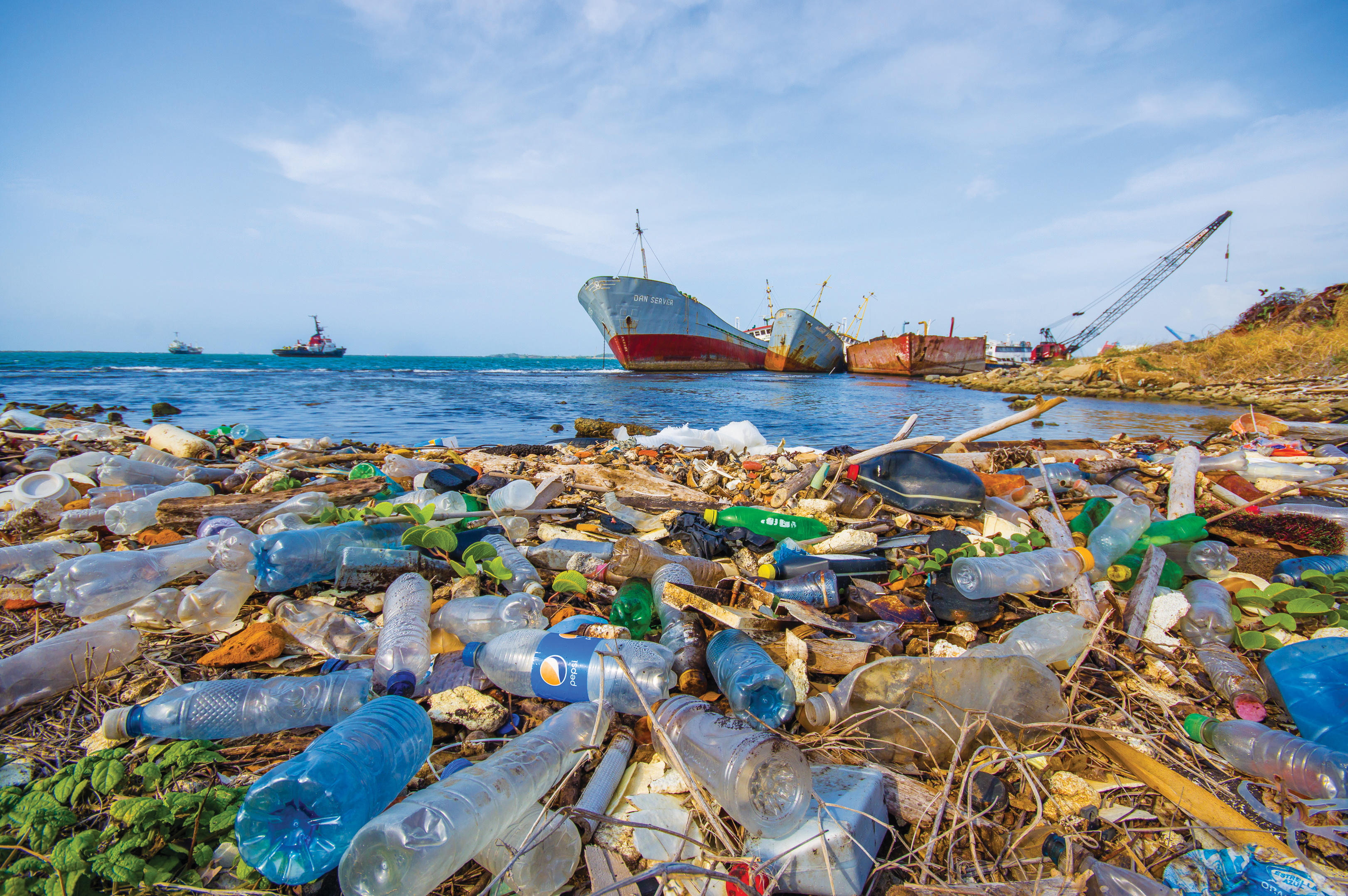Every drop in the ocean counts – literally and figuratively when it comes to environment friendly initiatives. Every industry is making conscious efforts to move towards sustainable practices egged on by governments and guided by international confederations and experts that help usher such practices. While the shipping industry is an essential proponent that keeps the wheel of the economy churning, it also causes a significant portion of greenhouse gas emissions. A 2021 industry study highlights that the global shipping industry accounts for around 4 percent of CO2 emissions, an estimated 15 percent of global Nitrous Oxides (NOx) emissions, and 4-6 percent of global Sulphur Oxide (SOx) emissions. Here are some of the initiatives that the shipping industry is pressing ahead for adoption, in a bid to create a sustainable future.
The use of plastics
The problem of plastics in the ocean is global and growing. On 16th October 2019, the Indian Directorate General of Shipping prohibited the use of single-use plastic items on board ships. The rule applies to both Indian and foreign-flag ships and prohibits the use of items made from plastic like cutlery, plates, cups, bottles up to 10 litres of liquids, bags, trays, containers etc. whilst in Indian territorial waters. According to the rules, the ships must keep all their single-use plastic items locked in a store during their stay at Indian ports, during their passage through the territorial waters of India and are prohibited from discharging these items at port reception facilities. To ensure this compliance, the International Maritime Organization (IMO) recommends that “all ship owners and operators should minimize taking on board material that could become garbage”. In order to document compliance during port state control, foreign-flagged ships intending to enter Indian ports are required to make a log entry identifying single-use plastic items available on board the ship, where the items are stored while the ship operates in Indian waters, and when (time, latitude and longitude) the items were placed in the store prior to entering Indian territorial waters. Under The International Convention for the Prevention of Pollution from Ships (MARPOL) Annex V, all plastic waste generated during the normal operation of the ship is strictly banned from discharge in any waters. Guidelines adopted by IMO recommend that, ship owners and operators, where possible with the ship’s suppliers, should consider the products being procured in terms of the garbage they will generate. Ships must avoid using supplies that come in bulk packaging, taking into account factors such as adequate shelf-life to avoid increasing garbage associated with such products, using supplies that come in reusable or recyclable packaging and containers, avoiding the use of disposable convenience items whenever possible and avoiding supplies that are packaged in plastic.
The biggest challenge India faces in terms of the plastic ban is the lack of cheaper alternatives. The waste management system in India is also in need of major improvements to actually enforce this ban and curb the pollution caused by single-use plastics. Strong marketing of cheaper alternatives to single-use plastic, spreading environmental awareness amongst the population and a better waste management system need to be planned to effectively and successfully implement the ban on the use of singleuse plastic.

Sewage disposal
Risks of harm arising from improperly managed ship wastes are increasing with the greater number of ships in service, and increasing habitation in port areas. That being said, various restrictions have been imposed on depositing hazardous wastes into water bodies. This means that ships need to capture and retain harmful wastes on board for periods of time. Waste needs to be appropriately disposed of, in accordance with the rules and regulations applicable at the point of disposal. All ships should be equipped with facilities for safe treatment, storage and discharge of medical waste in the sewage system. The 1978 protocol and amendments collated into a consolidated version in 2002, recommends that staff at ports and ship crews involved in the collection, handling and disposal of wastes need to be trained in the relevant legislation and the risks posed by waste. Effective enforcement is key to ensuring compliance. In some cases, waste-management treatment systems have failed to perform as required, resulting in unsafe situations. Therefore, reliance should not be placed on treatment and management systems alone. Multiple wastemanagement barriers should be actively maintained, considering how waste is generated on board, and choosing activities and practices that produce the least hazardous waste in the first place; matching waste-management treatment facilities to their required capacities and maintaining sound practices in collecting and storing waste. IMO provides various guidelines to ensure that the waste generated on ships is managed safely. That however, is translated rather loosely on-ground. At present, ship owners and yards have vessels carrying non-conformities and poor sewage treatment plant performance. For industry stakeholders this is more about a tick-in-the-box activity, as opposed to a genuine effort with a focus on outcomes. This lackadaisical approach stems from the various compliance norms that are impractical. Eventually what we are left with is loop-holed guidelines, a poorly functioning system and a major compromise on quality. Improving the sewage guidelines can be a very positive and significant step but, it may be important to introduce process monitoring requirements, including online monitoring for sewage treatment plants, effluent turbidity and flow rates. This will provide good visibility for the marine industry to get a handle on sewage pollution control. Such visibilities could pave the way for a future regulatory framework, capable of closing the gap between the rules and the realities that will be evidence based, practicable and sustainable.
Ballast Water Treatment Systems (BWTS)
Since the introduction of steel-hulled vessels, water has been used as ballast to stabilize vessels at sea. While ballast water is essential for safe and efficient modern shipping operations, it may pose serious ecological, economic and health problems due to the multitude of marine species it carries. As the volumes of seaborne trade continue to increase, this has become an international problem. IMO has been at the front of international efforts, taking the lead in addressing the transfer of Invasive Aquatic Species (IAS) through shipping. The type of ballast water treatment system a ship needs varies based on size, available space, budget etc. The various types of treatments for ballast water include chemical disinfection, U.V. treatment, deoxygenation, heat treatment and ultrasonic treatment. Chemical disinfection uses biocides (chlorine) to inactivate microorganisms in the ballast water. Ultraviolet lamps used for BWTS impact the DNA of the organisms and render them non-viable for reproduction. This effectively eliminates the microorganisms from thriving in the water and prevents them from burdening the ecosystem where the water is released. Deoxygenation includes inserting an inert gas like nitrogen into the ballast flow to kill the microorganisms. This treatment is recommended for long transits. Other treatments involve heat, which requires ballast water to be heated in tanks run through the engines to kill any microorganism. Ultrasonic treatment uses high energy ultrasound to eliminate organisms in the ballast water which kills the microorganisms by breaking down their cells. It is low maintenance and non-chemical, making it an attractive choice for ships. Preventing the transfer of invasive species and coordinating a timely and effective response to invasions requires cooperation and collaboration among governments, economic sectors, non-governmental organisations and international treaty organisations.
Moving towards cleaner fuels
The International Maritime Organization (IMO) has limited marine fuel sulphur content, in both Sulphur Emission Control Areas (SECAs) and Nitrogen Oxide Emission Control Areas (NECAs) to 0.5 percent globally by 2020. To mitigate emissions from ships, the IMO has issued and implemented more stringent regulations related to marine sulphur content and NOx emissions. Liquefied natural gas (LNG) tops the list of nontraditional fuels currently used in commercial ships, including some large container vessels. Switching from Heavy Fuel Oil (HFO) to LNG could reduce SOx emissions by 99 percent, NOx emissions by 80 percent, and CO2 emissions by as much as 20 percent. LNG also produces relatively little particulate matter. Switching to methanol made from many types of solid and liquid biomass feedstock could lower emissions from shipping and reduce the industry’s overall environmental impact as methanol is a liquid that is stored, transported, and used at ambient temperature. Hydrogen, which is a clean fuel, is also a recommendation. It is found that grey liquid hydrogen is reasonably costeffective, and it produces almost no carbon emissions when combusted to propel the ship. The carbon footprint of green liquid H2 can be as low as 4.6 and 11.7 g CO2 eq/MJ for hydrogen made with wind and solar energy, respectively, making it a promising shipping fuel. The use of scrubbers is a commercially available option for the shipping industry as ships installed with scrubbers can continue to burn high– sulphur bunker fuel and still comply with the 0.5 percent sulphur limit. This technology works by spraying alkaline water into a vessel's exhaust to remove sulphur and other unwanted chemicals. There are three types of scrubbers- open loop, closed loop and hybrid. scrubbers can eliminate 97-98 percent of (SOx) and 70-80 percent of particulate matter (PM). The Exhaust Gas Cleaning Systems (EGCS) open loop scrubbing is preferred as it is the simplest scrubbing system and demanded by ship crew. Although many early adopters in the North Sea and Baltic, fitted hybrid systems, they are operated for mostly in open loop. Closed loop and hybrid systems are available for enclosed bodies of water with little water exchange or where discharge is restricted by local regulation.
Emission trading systems
Around the world, people and governments are making efforts to combat pollution. The Kyoto Protocol, a United Nations agreement to limit the emission of greenhouse gases, has been signed by 191 countries. China, the US, and India have made great improvements in shifting to alternative energy sources in light of their net-zero targets. The final COP27 agreement includes the longawaited provision to establish a fund to help developing countries that are particularly vulnerable to global warming. The European Parliament and Council have reached an agreement that effectively bans all sale of fossil fuel cars and vans by 2035 making the EU, the world’s first region to go all-electric. They added the shipping industry to the bloc’s Emission Trading System (ETS) that effectively forces vessels to pay for their carbon dioxide, methane and nitrogen dioxide emissions for voyages within the bloc and that adds pressure to scale up green infrastructure and technologies. For securing a global action plan to halt and reverse biodiversity loss by the end of the decade, countries have allocated US $ 200 Bn per year for biodiversity initiatives both from the private and public sectors.
Our responsibility as ship agents
Over the last 8 years the Government of India has focused on port-led development which includes expanding port capacities and making the existing systems even more efficient along with ensuring that the marine eco-system and biodiversity is safe-guarded. Waterways are being harnessed to ensure Indian products get access to new markets. Therefore, as the runway for growth of the maritime industry expands, so does the responsibility that each of us takes in preserving our environment. To that effect, ship agents play an integral role in not only adhering to the rules and regulations, but also making sure ship masters and owners are aware of and follow through on the various compliances, means of disposal and prevention of further tainting of the environment. The onus is on us to ensure we do right by our customers, our country and mother nature - all of which have given us immensely.
